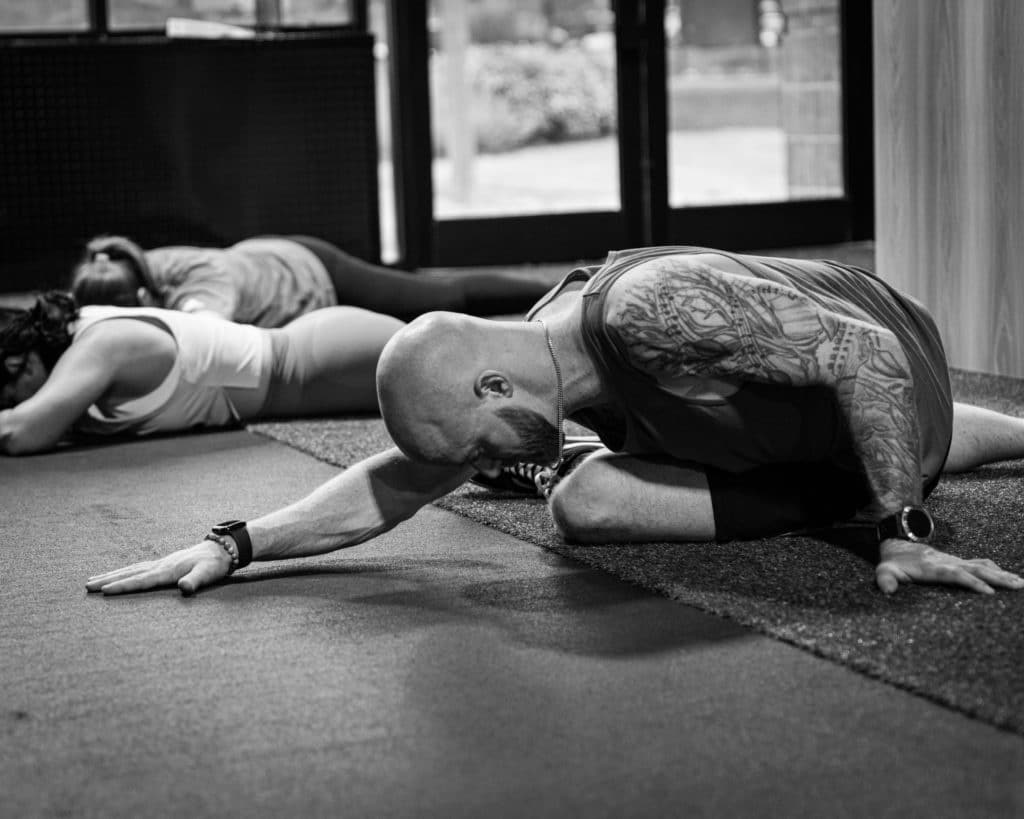Most people don’t cool down at the end of their workout. They finish up their last set, gather their things and rush into the next part of their day. And that, ladies and gentlemen, is a big mistake. Cooling down is critical for getting the most out of the current workout while prepping you for the next one. Let’s have a quick chat about what happens when you do a proper cool down and how it helps your body. Then we’ll walk through a quick cool down routine that you can do after every workout.
A Quick Physiology Lesson
We’ll begin with a quick refresher on the autonomic nervous system. It’s part of the peripheral nervous system and controls the body’s involuntary functions. Things like heart rate, blood pressure, respiration, digestion, etc. It has two divisions – sympathetic and parasympathetic. The sympathetic nervous system preps your body for fight or flight. It uses resources to open your airway, stop digestion, and accelerate your heart rate. Parasympathetic activity sends your body in the opposite direction. It tells your body to rest and digest. It replaces the resources that your sympathetic nervous system mobilized. The parasympathetic nervous system slows your heart rate, constricts your airway and slows breathing, and tells your digestive system to do its job.

Your sympathetic nervous system is active when you’re training. And that’s a good thing. But if it stays active for too long after your workout, your recovery suffers, and you don’t get the full benefit of training. Your heart rate remains elevated, causing your body to continue taking resources rather than replacing them. The last thing we need is to stay fired up all the time. We need to flip a switch and tone our body back down. That’s why we cool down.
What Happens When You Cool Down
Cooling down starts shifts the body from sympathetic dominance to parasympathetic dominance, then backed to a balanced state that tilts toward parasympathetic.
When we begin cooling down, the vagal nerve lowers heart rate and inhibits the sympathetic nervous system. This allows the body to relax rather than remaining tense. Muscle tone decreases and breathing slows. Blood is also redistributed. Exercise causes blood to pool in the muscles. Cooling down limits that pooling sends the blood more evenly throughout the body, which also helps to lower the heart rate. All of this combines to tell your body that it’s time to stop fighting and start repairing. The cool down is the first big step in driving recovery. But it does something else.

Transitions help us to be most present and effective throughout our day. It’s best if we have psychological buffers. A cool down is a psychological buffer between your workout and whatever comes next. It allows you to calmly move forward with the psychological and physiological resources necessary to be successful during the next part of your day.
Cooling Down: The Goal, The Process, and How to do it
The Goal
Okay, we want to shift our bodies from sympathetic to parasympathetic. There’s a simple goal to help us do that. We want to return our heart rate to what it was just before we started training. If you walked in the gym at 80bpm, the goal is to get your heart rate back down as close to 80bpm as possible before you walk back out the door.
The Process
The process involves slow movement, taking your body close to the floor, and slowing your breath cadence.
The first stage of the cool down is active recovery. This is movement like slow walking or rhythmic movements. Active recovery slows your heart rate gradually, which helps the toning down process.
Changing position to move closer to the floor comes next. Moving down to the floor calms your nervous system because your body has to use fewer resources to deal with gravity and stabilize your joints in open space. This helps to lower your heart rate. It also helps your body to relax.
All the while, we focus on breathing, using a cadence in which our exhalation is twice as long as our inhalation. We coach our members to breath in for two seconds, then out for four seconds. This longer exhalation cues your vagal nerve to drive parasympathetic activity.
How to do it
I’ll walk you through the process with the cool down we do after every training session at Beyond Strength.
First, we slowly walk to clean up any equipment and grab a drink.
Then, we do a slow, rhythmic exercise called quadruped rocking. It’s like doing a squat on your hands and knees at a slow pace. We inhale as we rock back, and exhale as we rock forward. We do this for thirty seconds to one minute.
After that, we go into the 90/90 position to do some light stretching and breathing. We do four breaths per side with a two-second in, four-second out cadence.
Then we lay belly down on the floor for crocodile breathing. We do four breaths in this position with the same two-second in, four-second out cadence.
Want to see this in action?
By the end, our heart rates are about where they were before we started training. And we’ve started the recovery process so that we get the most out of that training session and prep our bodies for the next one.
You might also like:
- MORPHEUS HEART RATE TRAINING: WHAT IT IS, WHY WE USE IT, AND HOW YOU CAN GET THE MOST OUT OF IT
- START NOW: WHY WAITING FOR THE PERFECT TIME IS THE WORST THING TO DO
- HOW TO CHOOSE THE RIGHT DEADLIFT VARIATION
- HOW TO BE INTELLIGENT WITH YOUR WEIGHT SELECTION
- HOW TO PROGRESS YOUR WEIGHTS DURING A STRENGTH PROGRAM
- WHY YOU’RE DOING WHAT YOU’RE DOING: FEBRUARY 2023 PROGRAM BLOG
- HOW (AND WHY) OUR YEAR-LONG TRAINING PLAN WORKS
- WHY WE TEST AR BEYOND STRENGTH
- TIPS FOR COMPETING WITH YOURSELF IN THE GYM
- HOW TO SET GOALS FOR 2023
- HOW MANY REPS SHOULD YOU DO? (Spoiler alert, it matters in more ways than you think)
- LET’S SEE HOW GREAT I CAN DO THIS
- HOW TO RECOVER FROM YOUR WORKOUTS
- FITNESS: THE INFINITE GAME
